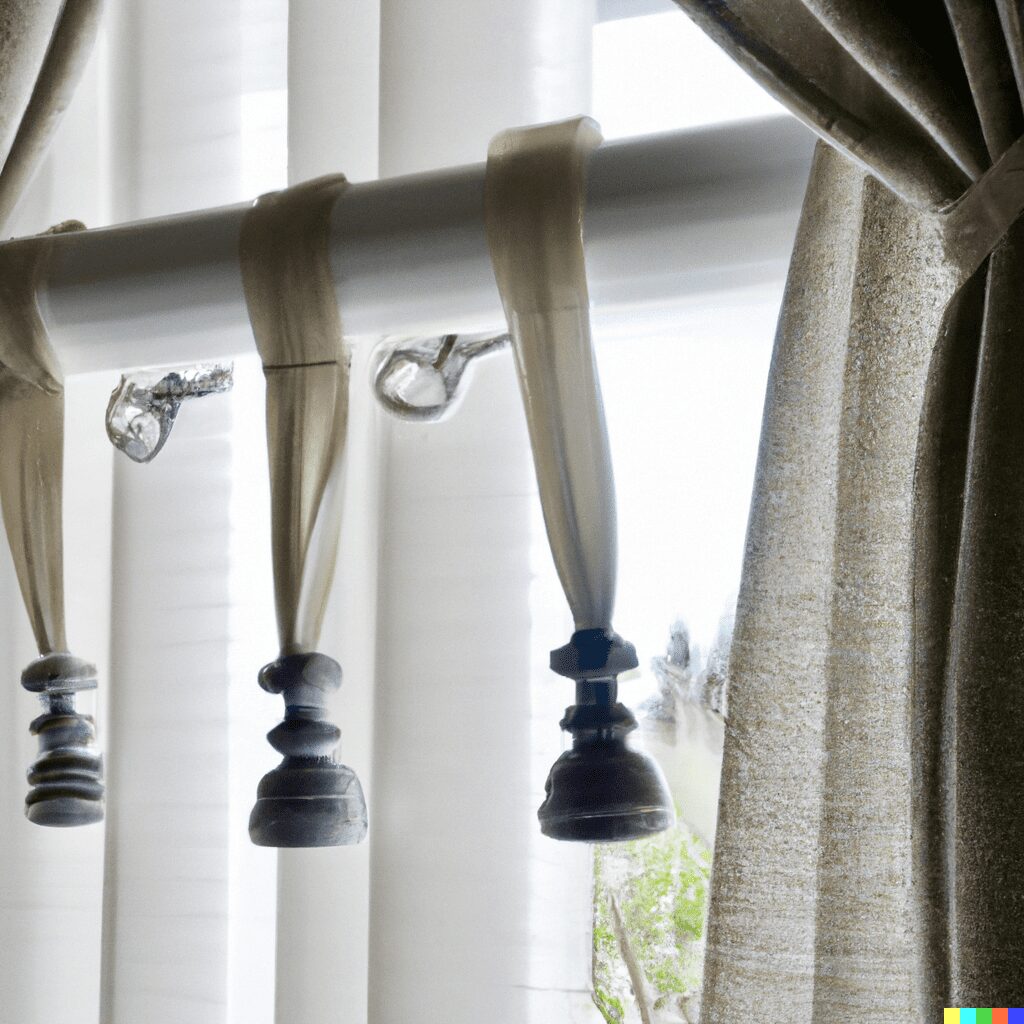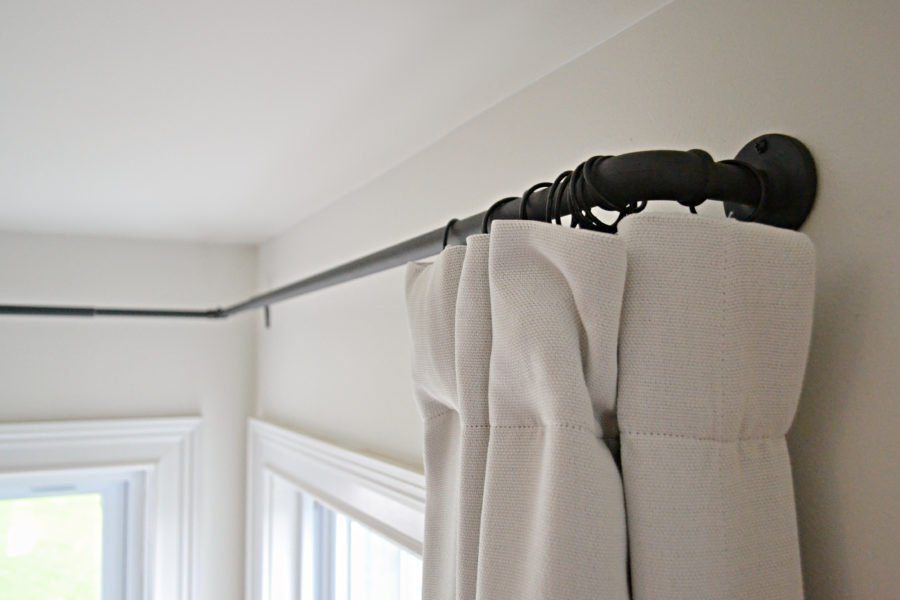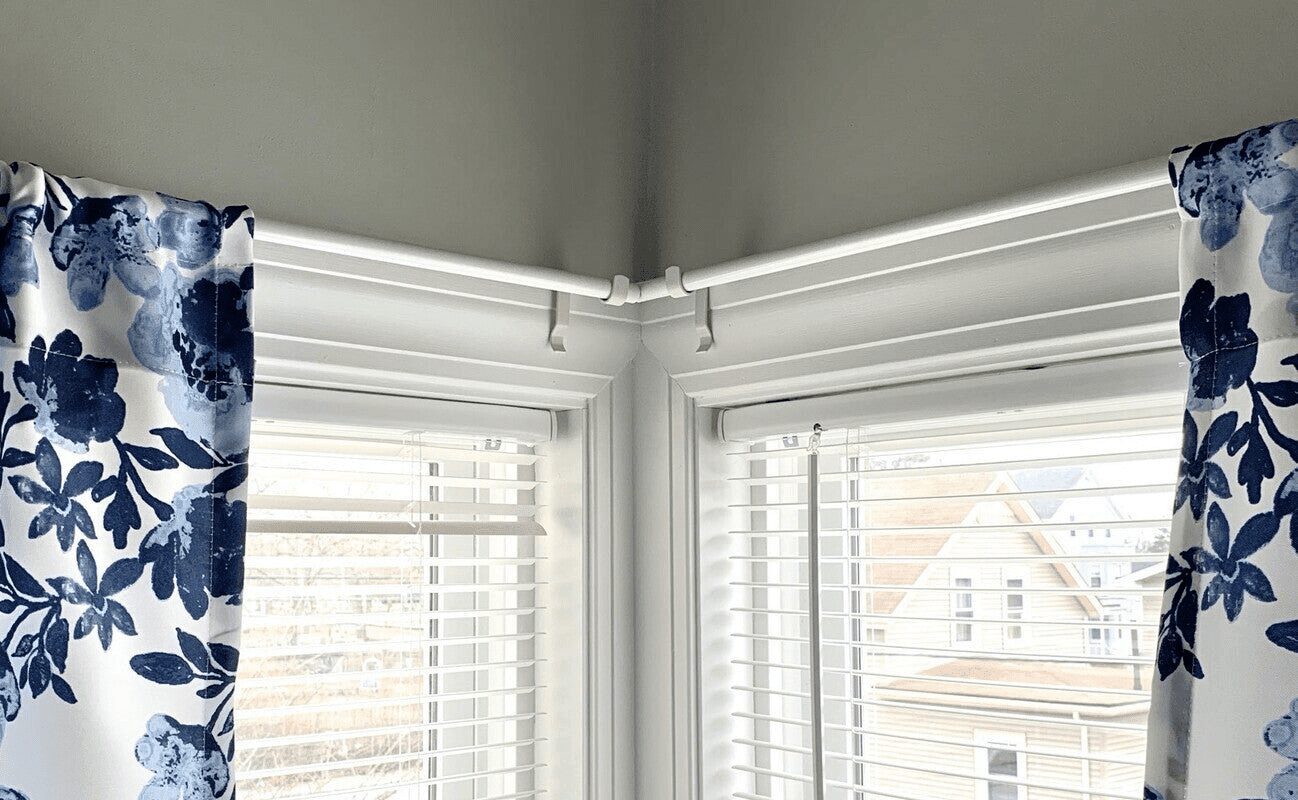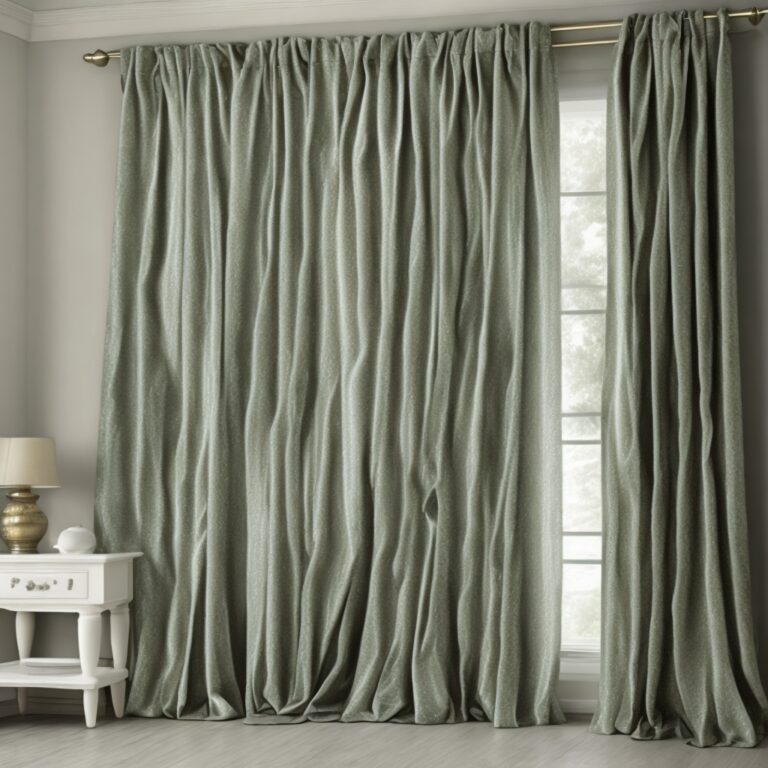How to connect curtain rods in a corner
Do you have a window in your home with a corner? If so, you may be wondering how to connect curtain rods in that space. It can be tricky! But don’t worry, we are here to help. In this blog post, we will show you how to do it quickly and easily. Follow these simple steps, and you will know a details about How to connect curtain rods in a corner!
What you need
- A pair of curtain rods with brackets
- Screws and wall anchors, if needed
- Measuring ruler
- Drill
- A pencil
- anchors
- Level
How to measure
To ensure a perfect fit for your window curtains, first, calculate the distance between the corners of your window. This information will give you an idea of how wide to make the curtain rods and how much space should be left between them. Think about where on the floor or windowsill you would like to hang your drapes before purchasing appropriate-sized rods and brackets that will meet all of your needs.
Installing the rod

Once you’ve taken the measurements, it’s time to install the rod. Place your curtain rods onto the brackets, making sure they are spaced properly and at an even distance from each other. If needed, markings on walls can be made with a pencil for drilling holes with an appropriate drill bit. Once all of this is done, use screws to attach them securely in place. Finally, if necessary, wall anchors should also be used where applicable to ensure that your curtains remain securely suspended.
Leveling your rods
Finally, once everything has been installed it’s important to check how to level the rods when hung across their respective brackets. This can easily be done by using a level that will indicate how much adjustment needs to be done. Once everything is in place, your curtains will be perfectly level and ready to hang!
And there you have it you now know how to connect curtain rods in a corner like a pro! With the right tools, measurements, and patience, setting up your window treatments has never been easier. Have fun decorating!
How do I prevent my curtain rods from falling out of the wall?
First, use extra-strength wall anchors. These will make sure the weight of the curtains won’t pull the rod out of the wall. Make sure to measure correctly and drill pilot holes before inserting the anchors into the wall. Also, make sure to check that all of the anchors are securely in place before hanging your curtains.
Second, use at least two curtain rods for heavier fabrics or thicker panels. This will spread out the weight so that one rod won’t bear too much pressure and possibly fall out of the wall. If possible, try to hang multiple curtain rods at varying heights for an even distribution. It may also be beneficial to use wooden slats or blocks behind each bracket if drilling into brick or stone walls as these offer more stability than metal brackets alone.
Third, use a combination of different types of screws and fasteners depending on what type of walls you are working with. For drywall, self-drilling screws usually work best while masonry walls may require special masonry drill bits and anchors such as redheads or tapcons. Using a variety of fasteners will help ensure that your curtain rods stay secure no matter what type of walls you are dealing with.
Finally, don’t forget about safety measures such as using goggles when drilling and wearing gloves when handling hardware such as screws and anchors – this will help protect you from injury due to small shards or splinters coming off during the installation process!
How do I make sure my curtain rods are level?

When hanging curtains, it is important to make sure that the curtain rods are level. If they’re not, they can look sloppy and unprofessional. Plus, the curtains won’t hang as nicely as they should. Fortunately, ensuring your rods are level isn’t hard at all—it just takes a little bit of extra effort.
The first step is to measure the distance from the floor up to where you want to place the rod. You can use a tape measure for this if you don’t have access to a laser level or other measuring device. Mark each side of the window with a pencil so that you know exactly where your curtain rod will go. Make sure these marks are even on both sides of the window before you go any further!
The next step is to install the brackets which will hold up your curtain rod. These should be installed at both ends of your window frame and screwed into place securely. Use a level to make sure that each bracket is perfectly even with one other if one is off by even an inch, it could cause your curtains to hang unevenly when you put them up.
How do you connect curtain rods in a corner without a bracket?

If you’re looking to hang your curtains in a corner but don’t have access to brackets, you can use a tension rod instead. Tension rods are made of spring-loaded metal and are great for places where installation is tricky or brackets aren’t an option.
To install a tension rod in a corner, start by measuring how wide the corner is so you know which size tension rod will fit. Next, measure how high up on the wall you want to place the it-the top of the rod should be at least four inches below the ceiling. Then, unscrew one end of the tension rod so that it can fit into the corner without any extra room. Finally, screw both ends of the rod into place and make sure the rod is tight and secure.
Tips and tricks
- Be sure to measure twice and cut once when installing your rods.
- Use wall anchors whenever possible for extra security.
- Always use a level to make sure that the rods are hung perfectly straight.
- Make sure your curtain rods are the right length for the space so that they fit snugly in the corner without any gaps
Final thoughts
We hope that you found this how-to guide on connecting curtain rods in a corner helpful! If you follow these simple steps, you should be able to hang your curtains perfectly without any drama. Plus, by using the tips and tricks we’ve provided, you can make sure that your installation is as secure as possible. So what are you waiting for? Get started on those new curtains today!

I am Stacy Roberts, an experienced curtains expert. I spend most of my time writing about curtain design for various magazines and websites, including writing many blog posts on the topic for Homepicks24.com. I love helping people find the perfect curtains for their homes and take great pride in my work. When I'm not writing or helping people choose curtains, I enjoy spending time with my wife and two young children. I also love playing tennis and going to the beach. I believe that having a beautiful home with well-chosen curtains is essential to creating a special atmosphere of comfort and serenity, and thus I strive to help people find the right window treatment for their homes.





